June 20, 2025
What is street snap? Tips on how to take photos and the difference between street snap and portrait photography
What is street snap? Tips on how to take photos and the difference between street snap and portrait photography
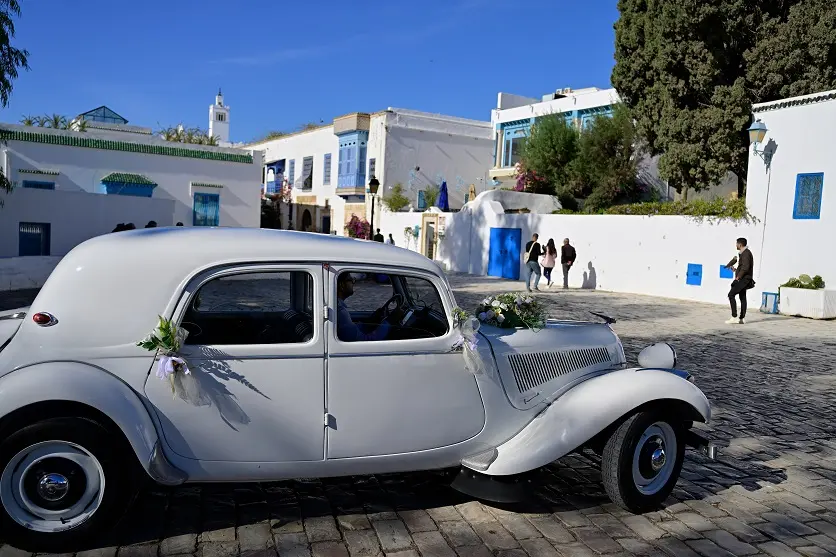

When you're walking down the street, have you ever come across a fascinating moment that makes you stop in your tracks? "Street snap" is a form of photography that captures such moments from everyday life. In this article, we'll explain the different types of street snap, shooting techniques, and how it differs from portraiture. This article is a great reference for those who aren't good at taking snapshots.

Street snaps are a form of photography that captures cityscapes and moments of everyday life. Unlike planned photography, street snaps are characterized by capturing spontaneous moments that occur on the street. Since the photos are taken impromptu, it requires intuition and observational skills. Some people may imagine street fashion photos when they hear the term "street snaps." However, this is only one of the subjects of street snaps, and all kinds of everyday elements can be subjects, such as buildings, people, and the light and shadows on the street.
Differences from portraits
Street snaps are often confused with portraits, as they often feature people. Of course, there are similarities, but their nature is very different.
In general, portraits are often shot in advance with a meeting with the model to decide on poses, expressions, and costumes. On the other hand, street snaps are basically shot without preparing a model or pose, and are shot in the moment. Therefore, it can be said that there is a high degree of improvisation and emphasis is placed on capturing natural moments.
In addition, while communication is important in portraits to bring out attractive expressions from the subject, in street snaps the emphasis is on capturing the environment as it is. The natural behavior and expressions of people on the street, who are not conscious of the camera, are what make street snaps so appealing.
Representative subjects
The subjects photographed in street snaps are diverse. The mood of the photograph and the message it conveys will change depending on the subject you focus on. Here we will introduce some typical subjects for street snaps.
Street corners and streets
Street corners and cityscapes are the basic subjects for street snaps. Carefully observe the shapes of buildings and alleys, and try to take photos that make use of perspective. Even in the same place, changing the time of day you take the photo will change the intensity, warmth, and shadows of the light.
You can also capture images reflected in puddles after the rain or in the glass of a building to create a unique and beautiful expression.
Portrait
The key to photographing portrait in street snaps is to capture the subject in a natural way. Taking pictures casually so that the subject doesn't notice, or using a telephoto lens to take pictures from a distance, will make it easier to capture natural expressions and behaviors.
However, it is essential to be considerate of the subject's privacy. Be careful and ask permission before posting photos on social media where the face can be identified.
Fashion
When shooting street fashion, it's a good idea to not only capture the whole body, but also to focus on the details, such as the combination of stylish accessories and layering. By capturing the parts that show the person's personality, you can create a photo that highlights their individuality.
The direction of the light and the balance with the background are also important. Try to find an angle that makes the fashion stand out. Also, by incorporating buildings and cityscapes as a background, you can create a sense of the atmosphere, culture, and story of the fashion and the city.
Buildings and structures

When photographing buildings or large structures, using a wide-angle lens to emphasize the perspective will create an impressive photo. For example, emphasizing vertical lines will help you create a photo that conveys the height and power of the building.
Also, by taking photos from different angles and positions, you may be able to discover distinctive shapes of buildings that you would not normally notice. Taking photos from an extreme angle looking up or from a bird's-eye view can give a different impression even with the same subject.
Vehicle
Cars, motorbikes, and bicycles moving through the city are also subjects that give a sense of realism. For example, taking a panning shot of a car moving through a city will emphasize the sense of speed and the cool atmosphere of the city. By changing the shutter speed, you can express a sense of dynamism in various ways.
It is also recommended to take photos of old cars and motorbikes that aim for details. If you try to capture the aging of the body, the texture of the paint, and the reflection of light, you will get a photo with a sense of realism.
Tips for taking great street photos
There are a few tips for taking memorable street snaps. Keep the following points in mind to not only take pretty photos, but also take snaps that will amaze viewers.
Observe the scenery and subject carefully
The important thing about street photography is to "see" before "taking pictures." Before picking up your camera, take the time to carefully observe the state of the city, the flow of subjects, the overlapping of scenery, and people's expressions. By paying attention to things that you are intuitively drawn to, you can reflect your own unique perspective in your photos.
For example, at a busy intersection, various elements such as the flow of people and vehicles are intertwined. What you choose to capture from among these is up to the photographer's sensibility. Sometimes it's best to put the camera aside and simply look at the city.
Discover the best moment
To find the perfect scene, it's important to patiently wait for the moment you want to capture, or to actively walk around and search for an interesting subject. To capture the so-called "decisive moment," be aware of predicting the subject's movements and imagining what will happen in the next moment. It's especially good to look for places where something is likely to happen, such as places with a lot of people or traffic, or places where you can clearly see the contrast and changes in light.
Picture the composition
Since street snaps are shots taken in an instant, it is important to imagine the composition beforehand. It is a good idea to practice basic compositions such as the rule of thirds, diagonal composition, and symmetrical composition so that you can pull them off instantly.
On the other hand, if you get too caught up in the composition, the photo may end up being ordinary, so it is also important to try and error with your sensibilities at the time. It is rare to get the image you imagined in one shot, so try taking the photo repeatedly, changing the angle and position of the camera.
Keep your camera ready
An important point in street snaps is how to capture split-second shutter opportunities. For this reason, make sure to set basic settings such as exposure on your camera in advance, and make fine adjustments as you take pictures. It's also important to always have the camera handheld and ready to go. Keep your camera hanging around your neck or in your hand, so it's always ready to shoot.
Change the angle or position
In street snaps, you can encounter unique perspectives by shooting from a variety of angles and positions, not just at eye level. For example, you can effectively convey the size and power of your subject by shooting from a low angle close to the ground, or you can capture an unexpected shape by getting closer to one part. You can also get creative with your framing by shooting from behind a wall or pillar, or by isolating a specific subject from a crowd.
Creating contrast with light and dark
Contrasting the shadowed and lit areas and emphasizing the contrast will create an impressive photograph. Look for compositions that effectively contrast light and shadow, such as the contrast between the shadow of a building and the sunlight, or a silhouette that stands out in backlight.
However, landscapes with a high contrast between light and dark are prone to overexposure and underexposure. Add exposure compensation and adjust so that the subject and details are clearly visible.
Exposure setting tips
Here, let's check the exposure settings to capture the subject clearly. The appropriate exposure will vary depending on the image you want to capture, but it's a good idea to have a basic understanding of the exposure settings and be able to adjust them flexibly as the situation demands.
Shooting Mode
For street snaps, it's a good idea to use aperture priority mode or shutter speed priority mode. Aperture priority mode is suitable when you want to prioritize bokeh, and is recommended when you want to emphasize the subject against a blurred background.
On the other hand, shutter speed priority mode is useful when you want to freeze a moving subject. For example, it is often used when photographing a moving car or bicycle, or when you want to express a sense of speed with a panning shot. Switch between modes depending on the subject you want to shoot and the atmosphere you want to express.
F-number (aperture value)
If you want to capture the entire landscape sharply, we recommend narrowing the aperture slightly to around F8 to F11. The same goes for capturing buildings and cityscapes sharply.
On the other hand, if you want to make the most of the blurred background to make the subject stand out, try setting an F-number close to maximum aperture, around F2.8 to F4. Also, when shooting in dark places, opening the aperture will allow more light to enter, making it easier to ensure exposure even with a faster shutter speed.
Shutter Speed
When photographing a moving subject, you will need a shutter speed of 1/250 seconds or faster to prevent blurring. In other cases, start with around 1/125 seconds and adjust while checking the brightness and blurring.
On the other hand, when taking panning shots, 1/60 seconds is a good guideline. A slower shutter speed will create a more dynamic feel, but it will be more difficult, so be careful. The optimal shutter speed will vary depending on the speed at which the subject moves and the shooting distance, so we recommend trying out various settings.
ISO Sensitivity
Generally, there is no problem with setting the ISO sensitivity to auto, but in dark places, it is a good idea to set the upper limit to around ISO 3200 to ISO 6400. If the ISO sensitivity is too high, noise may become noticeable, so care must be taken.
Also, when shooting in bright places during the day, setting the ISO sensitivity to a low level (around ISO 100 to ISO 400) will make it easier to obtain a clear image. If the image becomes too dark, adjust the ISO sensitivity by raising it appropriately.
Adjusting the White Balance
Basically, it's a good idea to shoot with auto white balance and then change it to suit your taste.
For example, "Sunny" emphasizes red tones, giving an overall warm impression. On the other hand, "Light bulb" emphasizes blue tones, giving a cool, calm impression. This is useful when you want to express an urban landscape or a futuristic atmosphere.
For serious photography, shooting in RAW+JPEG allows you to flexibly adjust the white balance later when developing. Try various settings to see how changing the color tone changes the impression of the photo, and you'll get closer to your preferred expression.
How to choose the best lenses for street photography
Here we will introduce the characteristics of lenses suitable for street snaps and how to choose them.
Lightweight and compact
Street photography involves long periods of shooting and a lot of moving around, so if you choose a lightweight lens, you won't get tired easily and you can enjoy shooting for longer. Compact lenses also have the advantage of being easy to handle and less likely to miss a photo opportunity. It's a good idea to use lens mobility as one of your criteria.
Lens focal length
The focal length of a lens is directly related to the angle of view, so choose a lens with an appropriate focal length according to the image you want to capture.
Wide-angle lenses with a focal length of approximately 35mm or less have a wide angle of view, making it easy to capture the entire landscape and emphasize perspective. They are recommended when you want to shoot buildings and cityscapes with a powerful composition.
Standard lenses with a focal length of approximately 50mm can shoot with an angle of view close to the effective field of view of the human eye, resulting in natural-looking street snapshots. This focal length is also often used for street snapshots.
On the other hand, telephoto lenses with a focal length of approximately 85mm or more can capture distant subjects in a large size. The angle of view is also narrow, making them useful for cutting out part of a landscape or shooting while observing from a distance.
Maximum aperture
Lenses with an aperture of F2.8 or more can capture more light, making it easier to take brighter photos in low-light environments such as at dusk or indoors. Also, lenses with a small aperture value create more background blur, allowing you to emphasize the subject against a beautiful blur.
High image quality
Lenses with high resolution and sharp depiction capabilities can clearly depict the fine details of buildings and people's expressions. Being able to depict fine textures and textures expands the range of expression, so a lens with high resolution is recommended. Check the sample images to see if you can achieve the depiction you imagine.
Autofocus (AF) performance
In street photography, it's important to focus on the subject quickly so as not to miss a split-second shutter opportunity. For that reason, choose a lens with smooth and fast AF. If you often shoot moving subjects, you'll also want to check the motion tracking performance.
In-lens image stabilization mechanism
Lenses with in-lens image stabilization mechanisms make it easy to take clear photos even with slow shutter speeds, so they are useful when shooting handheld in dark places or with telephoto lenses.
Also, lenses that allow you to adjust the amount of image stabilization can be used to take advantage of camera shake, broadening the scope of expression.
Street snaps start with observing the subject
The key to street snap photography is "observation." Take a good look at the situation and look for interesting scenes and viewpoints. To do this, you need to walk around and find unique subjects and compositions, and wait patiently for the scene you want to capture.
Also, when taking photos, be sure to consider both the minimum standards of law and etiquette before enjoying your shoot.
While keeping in mind the tips introduced in this article, try your hand at street snap photography using your intuition.

Lens Featured in this Impression
-
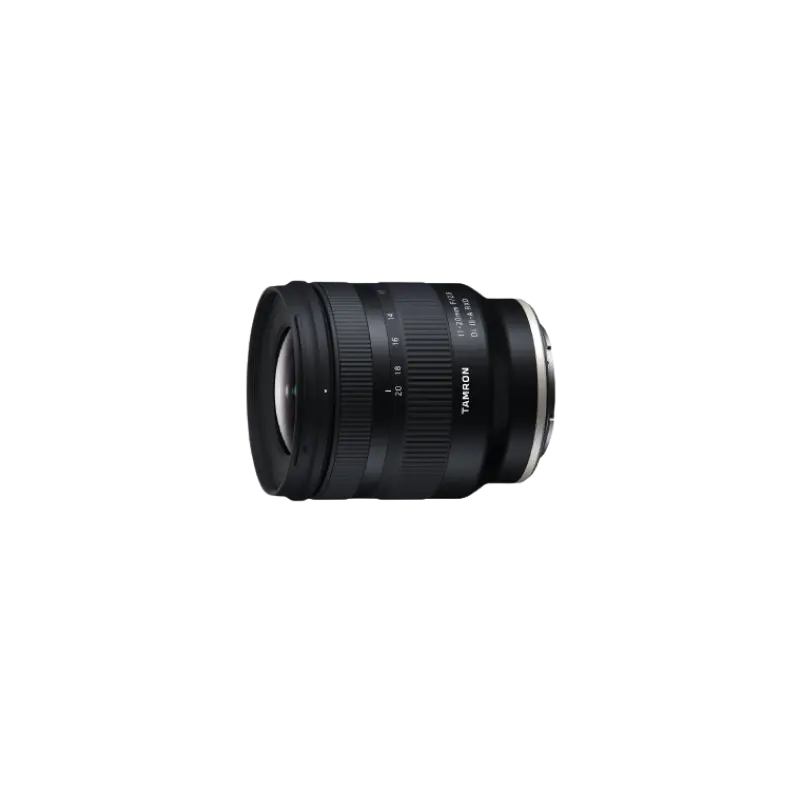
-
11-20mm F/2.8 Di III-A RXD b060(Model )
Product Page | 11-20mm F/2.8 Di III-A RXD (Model B060) is the world's first compact, lightweight F2.8 ultra wide-angle zoom lens for Sony E-mount APS-C mirrorless cameras. Can be a great choice for video shooting.
-
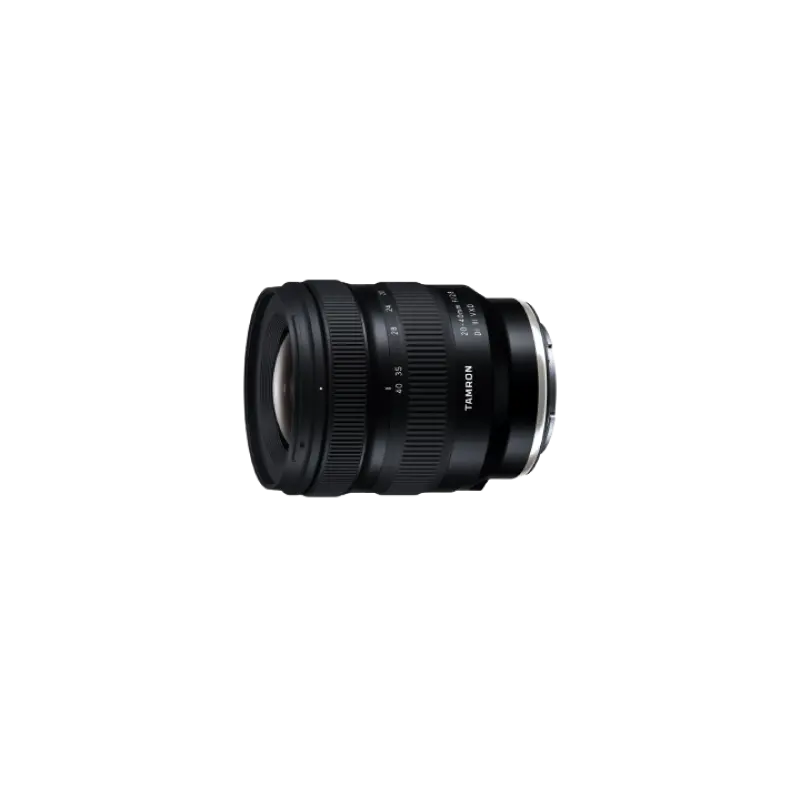
-
20-40mm F/2.8 Di III VXD a062(Model )
The 20-40mm F/2.8 Di III VXD (Model A062) is a new large-aperture standard zoom lens that thoroughly pursues portability. While covering the range from the ultra-wide angle of 20mm to the standard range of 40mm, it is the smallest and lightest in its class. It also offers high image quality throughout the entire zoom range, making it useful not only for still image shooting but also for video recording such as vlogging. The VXD, which is quiet and agile, achieves high-speed, high-precision autofocusing. It is a new, unprecedented large-aperture standard zoom lens that allows users to easily enjoy taking out and shooting both still and video.
-
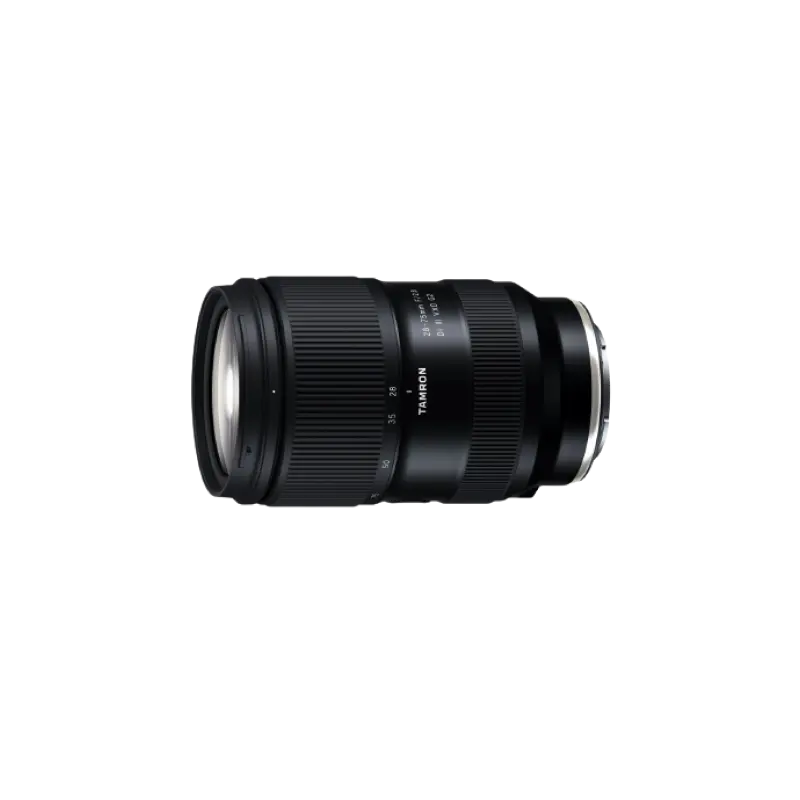
-
28-75mm F/2.8 Di III VXD G2 a063(Model )
Product Page | 28-75mm F/2.8 Di III VXD G2 (Model A063) is the second-generation fast-aperture standard zoom lens for Sony and Nikon full-frame mirrorless cameras, offering significantly improved optical and autofocus performance and new function customization.
-
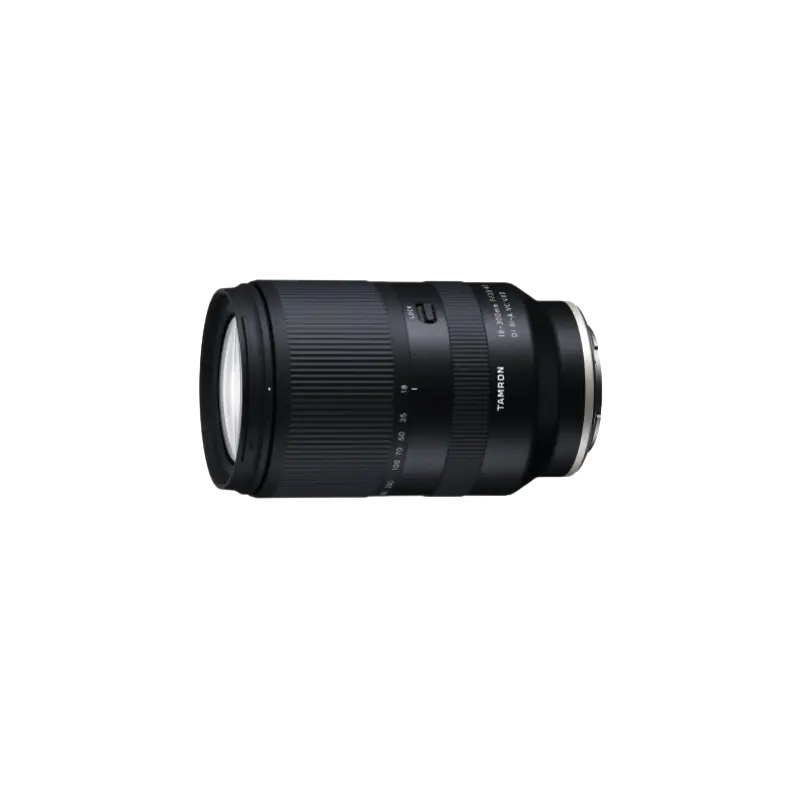
-
18-300mm F/3.5-6.3 Di III-A VC VXD b061(Model )
The 18-300mm F/3.5-6.3 Di III-A VC VXD (Model B061) achieves 16.6x zoom and is equipped with the VXD for a quiet and agile AF drive. The optical construction includes several special lens elements, specifically four LD (Low Dispersion) and three hybrid aspherical lens elements. These elements help to produce clear, sharp images from the center to the corners and deliver top-level image quality in its class. It is enabled close-up shooting and is equipped with the VC system. The 18-300mm F/3.5-6.3 makes photography more fun because you can use it in an unlimited number of situations. It’s so versatile, it will inspire you to push your creativity further and further.
-
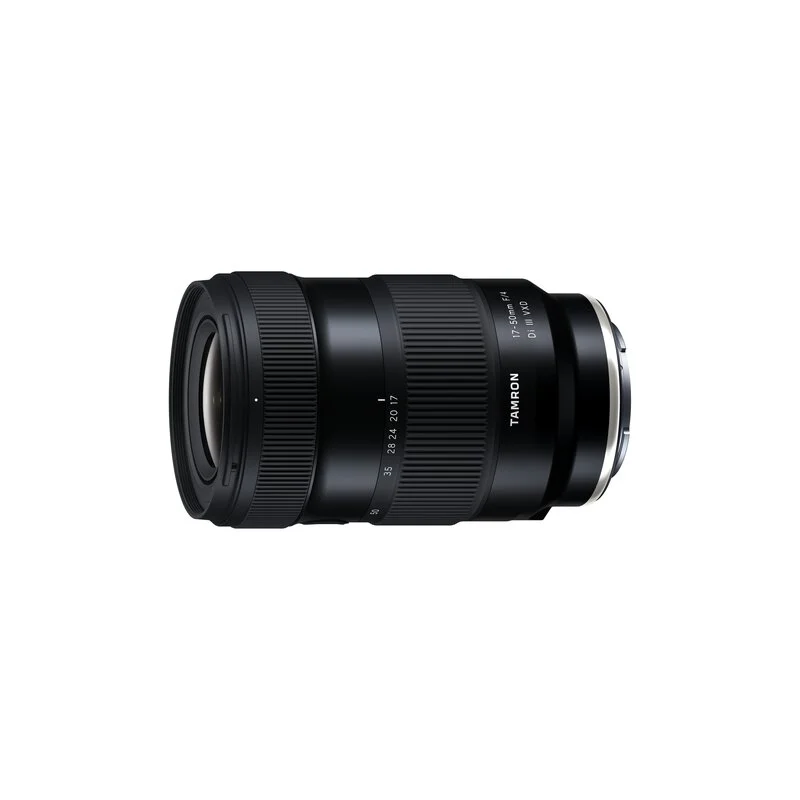
-
17-50mm F/4 Di III VXD a068(Model )
It's the world’s first lens covering from ultra wide-angle 17mm to the standard 50mm focal length. The highly-compact TAMRON 17-50mm F/4 Di III VXD (Model A068) for Sony E-mount full-frame mirrorless cameras offers maximum versatility for still and video creators. From landscapes to living rooms, this lens captures all that you see.









